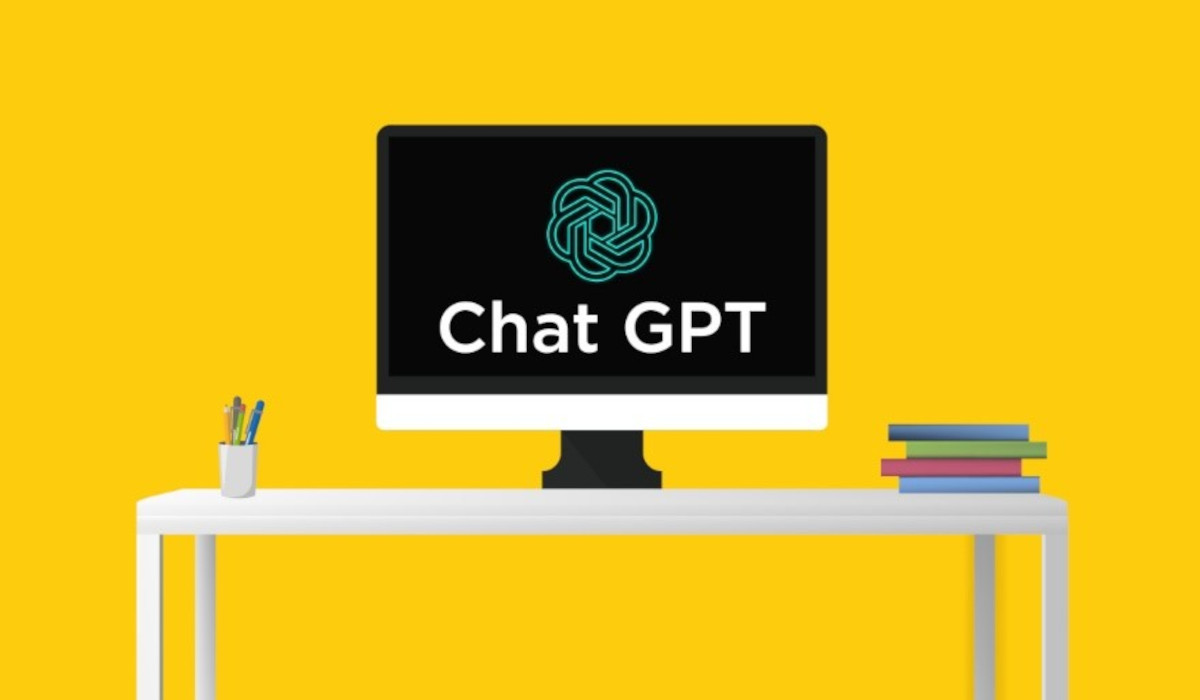Generating product descriptions quicker and better while saving time and minimizing expenses. This is the most evident ChatGPT PIM integration advantage that lies on the surface. While this advantage is perfectly valid and broadly available, the capabilities of integrating OpenAI built-in extension into your PIM system do not end there.
Let's explore the functionality that ChatGPT 4 brings to your product data management here and now, provide practical examples of how to use that in your business for optimized performance, investigate the additional functions that are emerging and currently tested, and try to answer the question of how AI is changing e-commerce and PIM industry and what changes we are to expect in the immediate future.
Current Trends - How are Businesses Using ChatGPT Now?
Tailored product descriptions
Writing product descriptions is undoubtedly one of the most tedious and time-consuming tasks for all e-commerce experts. Nevertheless, precise, and relevant descriptions are crucial for both customer awareness and SEO ranking.
ChatGPT integrated into the PIM system allows the generating of long product descriptions and adjusting the length accordingly. This description will be generated based on the product's context - size, color, benefits, and other given characteristics. This results in a more comprehensive and detailed description.
With PIM ChatGPT extensions modifying and regenerating the wording is possible even if the product's characteristics remain unchanged.
Customer interaction and review processing
Summarizing reviews for enriching product listing becomes possible too. Instead of reading through countless reviews that highlight similar upsides and downsides of the product, e-commerce experts can now summarize them while showcasing the key conclusions, and valuable insights, identifying strengths and weaknesses easily and enabling unparalleled scalability.
This is one more case where the PIM ChatGPT combination brings additional scalability, as businesses can now automate the process of summarizing reviews.
Optimized SEO and Social Media Strategies
ChatGPT also allows the generating of quality SEO product content with appropriate, keywords, titles, and length, and optimizes this content for SEO later. This helps products gain more exposure and attract a broader audience quickly and with fewer resources. However, it does come with limitations which we will later.
Creating influential social media content is an effortless way that is also possible with ChatGPT. Specifying format, whether it is a blog post or certain social media, caption, story outlines, etc., helps obtain the desired length and flow.
Structuring product sheets data
Integrated seamlessly within PIM, ChatGPT enhances data analysis capabilities in your product sheets. It saves your time by automating tasks such as running calculations, creating tags for products, building up a product tag library. It also helps to clean up lists, standardizing data for better organization.
Mapping attributes and organizing product catalogs
ChatGPT adeptly aids in the mapping of attributes and efficient organization of product catalogs. It diligently categorizes products according to their attributes, thereby establishing a well-structured and coherent framework for the catalog. Utilizing natural language processing, ChatGPT ensures the organization of the catalog, facilitating seamless navigation and product discovery for users.
Multilingual support
Integrated within the PIM system, ChatGPT facilitates multilingual support, s it can generate product content in diverse languages, utilizing the language attributes stored within the PIM. This capability is critical for businesses operating across heterogeneous markets, enabling them to handle and produce content in multiple languages.
PIM Systems that Offer ChatGPT Integration
Let's explore PIM systems that already offer ChatGPT integration and the functionality it brings.
Using ChatGPT with AtroPIM
The AtroPIM offers seamless ChatGPT integration for users within Workflows Module combining the power of AI with workflow automations. The prompt can be easily configured with the help of text blocks and variables and responses of ChatGPT can be written to any entity field in the system. Asking AI can be triggered by any event in the system, for example, when the product status is changed. This allows PIM system users to do multiple tasks like forming SEO data, creating titles and meta descriptions, generating attribute-based product descriptions, processing reviews, conducting translations, and doing all sorts of operations with text and numerical data much faster. The ChatGPT functionality within the module is extremely flexible and can reflect the full NLP functionality of the OpenAI version you are currently using, including the ability to perform those operations in bulk.
Using ChatGPT with Akeneo
Akeneo's integration with ChatGPT's AI Module contributes to streamlining the process of creating content for products in online stores. This integration offers the capability for bulk actions, enabling users to manage multiple products. By leveraging ChatGPT Open AI, the module simplifies content creation on the Product Edit Page. Users can seamlessly input keywords and witness automatic generation of descriptions, ensuring an efficient and accelerated workflow.
Using ChatGPT with Struct PIM
The integration of Struct PIM with OpenAI Chat GPT is facilitated through the AI-Assistant extension. This feature empowers users to activate the AI Assistant, thereby harnessing its capabilities across a myriad of text attributes, thus ensuring unparalleled adaptability. Moreover, the AI Assistant offers an unlimited range of command prompts that serve to maintain brand cohesiveness by leveraging existing product data for the generation of tailored text. Notably, this innovative tool further allows for intuitive chat interactions aimed at refining product descriptions, while also providing a bulk content generation feature, contributing to a significant enhancement in operational efficiency.
Pitfalls of PIM-ChatGPT Tandem - and How to Avoid Them
Generic content and inaccuracies
Inaccuracies are common. Even the newest model ChatGPT 4 Turbo is inclined to "hallucinations" and the importance of reliable product content for a positive customer experience.
By providing more details, data models, and labeling, we can improve the generated text and make it less generic.
To implement this in practice, follow the strategy known as Seed Prompting
Seed prompting serves is a method of providing specialized training or prompting for ChatGPT. By infusing your distinct ideas, expertise, experiences, tone, style, and perspectives, you improve the content quality, relevance and its EEAT.
To do that:
· Craft focused seed prompts tailored to your PIM context.
· Develop pre-defined templates for common content structures.
· Ensure contextual inputs for accurate content generation.
· Adopt an iterative refinement approach for better guidance.
· Streamline the editing process within your PIM system.
Apart from that, human Editorial Review is a fundamental necessity. This tackles AI's inclination to deduce and imaginatively derive information, necessitating the verification of facts, ensuring accuracy, and adding a touch of creativity.
Security concerns
The utilization of PIM in conjunction with ChatGPT has increased apprehensions regarding security. While some of these concerns have perfect reasoning behind them, it is important to understand certain things and implement the following practices.
- You must know what data type ChatGPT stores. These data types encompass device data, usage data, log data, account information, and user content.
- In the repository of ChatGPT, there exists a diverse collection of data categories such as device data, usage data, log data, account information, and user content.
- Get a clear understanding of the OpenAI privacy policies before integrating it with your PIM system to ensure security and transparency in the handling of personal information.
- Develop a robust data security strategy that specifically addresses generative AI, like ChatGPT.
- Educate users on the potential risks and benefits of ChatGPT, emphasizing responsible usage and awareness of the data it collects.
- Enable User Controls and take advantage of features provided by OpenAI, such as the ability to turn off chat history to prevent training on specific conversations.
- Engage with cybersecurity experts to understand your organization's specific needs and implement tailored security measures for generative AI.
Emerging Trends and Future Prospects
The advanced features of ChatGPT V have opened new possibilities for image-based product descriptions. The introduction of plugins like SceneXplain, part of ChatGPT 4, has paved the way for obtaining precise and detailed product descriptions directly from images. This innovation is generating significant interest among e-commerce companies, promising a potential breakthrough in efficiency by providing automatic, detailed image explanation and comprehensive descriptions.
The integration of AI visual perception capabilities, particularly the advancements in ChatGPT V, marks a substantial leap forward despite current limitations. Undoubtedly, the strides in image understanding and description generation are remarkable. However, businesses are cautioned to exercise vigilance and maintain human proofreading to mitigate the risk of disseminating inaccurate product information, which may adversely impact their reputation.
Explore Diverse PIM AI Solutions: Beyond ChatGPT
Pixyle.ai - Photo-based tagging
Pixyle.ai integrates with PIM systems through dedicated extensions or plugins designed for image-based tasks.
PIM users initiate photo-based tagging tasks within the system. Pixyle.ai processes product images, automatically tagging attributes like color, shape, pattern, and fabric.
Pixyle.ai may require customization or configuration based on the specific industry or product types to ensure accurate and relevant tagging.
These integrations empower PIM users to automate and optimize various tasks, from categorization and SKU matching to demand forecasting and image-based content generation. However, human oversight remains crucial to address limitations and ensure the accuracy and quality of the outcomes.
Garvis AI - Demand forecasting
Garvis AI integrates with PIM systems through APIs to access relevant product and sales data.
PIM users initiate demand forecasting tasks within the system. Garvis AI analyzes historical data, website analytics, and other factors to predict future demand.
Users may provide additional context or inputs to refine forecasting models, and the system automatically adjusts orders based on predictions.
Pumice.ai - Sorting products into categories
Pumice.ai can be integrated into a PIM system through APIs or connectors. The PIM system provides data to Pumice.ai, and the AI tool uses its algorithms to analyze product titles, descriptions, or images and map products to specific categories.
Pumice.ai is typically incorporated into workflows within the PIM system, allowing for automated categorization as part of data processing routines.
While Pumice.ai automates categorization, human specialists may still be involved in overseeing and refining the categorization process.
Unite.ai - Matching SKUs of duplicate products
Unite.ai is integrated into PIM systems through APIs or connectors, allowing the system to send product titles for SKU matching.
PIM users trigger SKU matching as part of data processing tasks. Unite.ai processes the titles and suggests accurate SKU matches, helping identify and consolidate duplicate products.
Continuous monitoring is required to identify outliers and discrepancies in pricing, ensuring accurate SKU matching and preventing potential issues in a marketplace environment.
Width.ai - Creating categories from scratch
Width.ai integrates with PIM systems through extensions or plugins that facilitate seamless communication. The PIM system feeds relevant data to Width.ai for category and attribute structure proposals.
Users initiate the AI tool within the PIM system, and Width.ai generates suggestions for a new, unified category and attribute structure.
The effectiveness of Width.ai depends on the existing quality of category and attribute structures in the PIM system. Users may need to refine generated proposals based on their specific needs.
Key Takeaways
At the beginning of 2024 ChatGPT is still only a helpful assistant for PIM users, but its share of duties will continue increasing while optimizing even more processes and decreasing human involvement and supervision. Here are a few things to keep in mind:
- Integrated within PIM system, ChatGPT revolutionizes content generation, improving SEO, social media impact, and multilingual capabilities.
- AtroPIM, Akeneo, and Struct PIM are among those PIM systems that provide diverse integration options with unique features.
- AI performance challenges persist, including generating generic content, inaccuracies, and security concerns.
- Looking ahead, the foreseeable future trends entail the integration of AI visual perception, while decreasing the scale of human oversight which is a must today to maintain accuracy.
- Ultimately, the incorporation of ChatGPT into PIM systems yields ongoing positive advancements for businesses and their customers, elevating both productivity and content quality.



